Dakila | Interview | 50th Anniversary Reissue of their Self-Titled Album
Dakila emerged from the melting pot of musical fusions that originated in the San Francisco Bay Area of the late 60s.
They often could be seen playing at Bill Graham’s Fillmore West, Winterland and all the major clubs in the San Francisco Bay Area and festivals. Singing in Tagalog, Spanish and English, Dakila was the first Filipino-American band signed to a major label. Their sole album from 1972 combined their Filipino heritage with Latin rock, psychedelia / acid-rock and afro-funk. The result was an explosive, hot jamming sound full of congas/percussion, Hammond, dual fuzz guitar, fuzz-bass…
Guerssen issued the first ever official reissue, features corrected pitch (the original was speeded up by the producers against the band’s will) and a color 4-page insert with detailed liner notes.
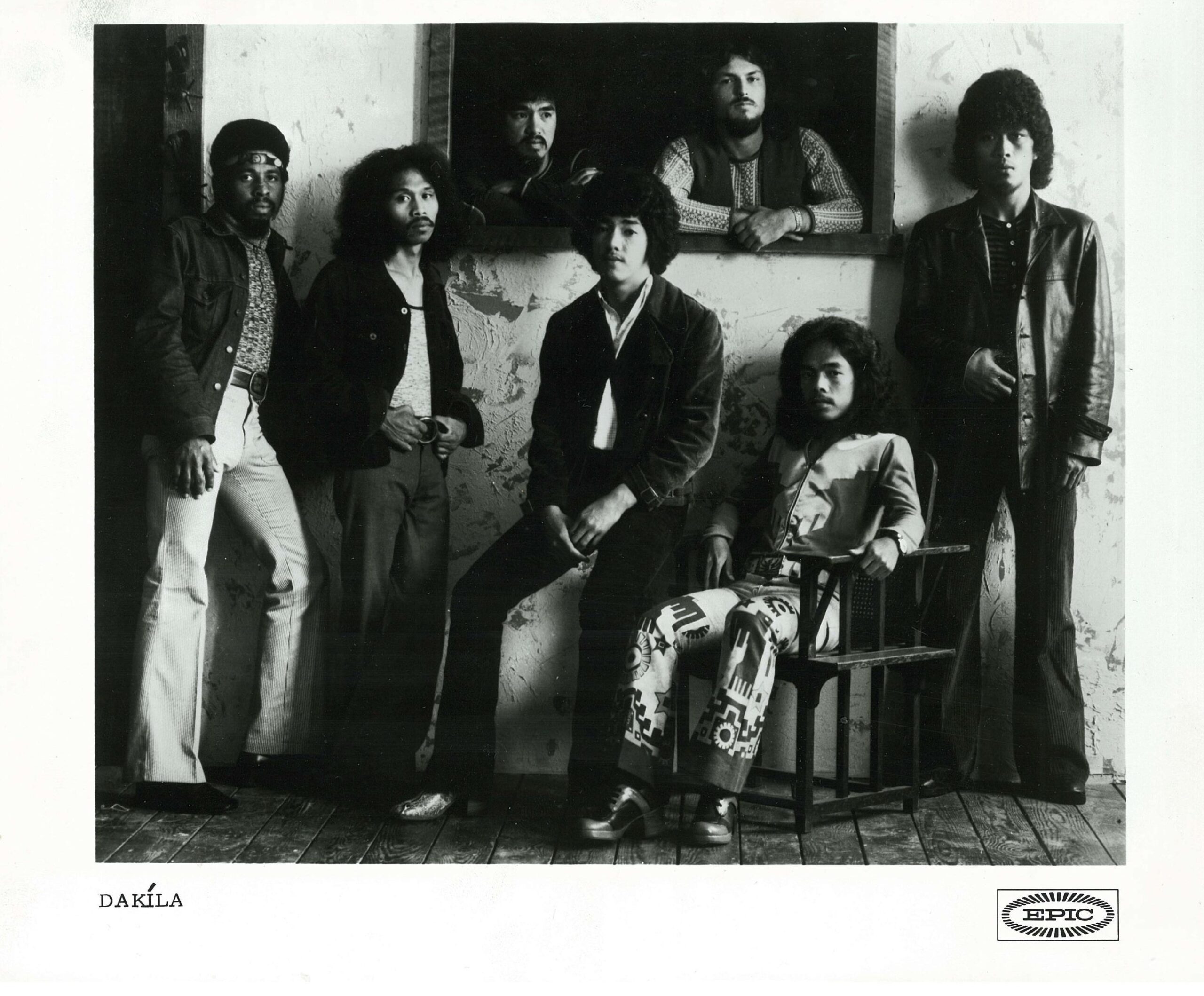
“Dakila’s music is tribal in a very real sense”
Where and when did you grow up? Was music a big part of your family life? Did the local music scene influence you or inspire you to play music?
David Bustamante: I am the only remaining active original member of the 1972 band Dakila. It’s always a pleasure to share stories of the band Dakila. I’m in good health being in my late 60’s and blessed to be able to still enjoy writing and performing music. I was the guitarist/vocalist/percussionist for Dakila’s first and second album.
I was born in Fort Worth, Texas in 1955 to a military family. My father, Anacleto Bustamante was a musician in the USAF band after immigrating to the U.S. in the early 1950’s from the Philippines. We then moved to California and settled in a small city called Vallejo. I am the youngest of 6 children, 4 boys and 2 girls. I grew up in a household of music. There was always a piano in the house and my dad was a horn player who practiced all the time. He also tried to teach all of us music. Some went along and some resisted. Two of my older brothers played music and even had their own bands during and after high school.
Being the youngest child, I grew up listening to my father’s big band jazz music as well as my brothers’ bands that played the best of the 50s and 60’s music. I was fortunate to be in many of their rehearsals in our garage soaking in all that music. I began piano lessons at age 7 that were offered at the Catholic elementary school that I was attending. In addition to piano my dad taught me at home to play wind instruments and vocal music sight reading. I was never really good at sight reading because my vision was poor and I did not realize I needed glasses till much later.
There was always a drum kit and some other musical instruments in our garage and I would teach myself to play them. My dad felt that everyone should learn the piano and he was right because it helped me learn to adapt to other musical instruments and to understand composition and timing. After a couple of years studying the piano and learning to play the clarinet and sax, the Beatles came to the U.S. in 1964. Once I saw the Beatles on the Ed Sullivan Show, I wanted to be a guitar player like the ones in my brothers’ bands. So I taught myself to play the ukulele and guitar at 9. I learned on a beat up acoustic classical guitar that had only 4 strings the same as the ukulele. It was missing the 2 bass strings “A” and “E”.
Watching the guitar players in my brothers’ bands, I easily figured the guitar out. I finally got myself a decent acoustic guitar with all strings till I can afford a good electric guitar. I listened to much of the popular music at the time and could learn the guitar chords and mimic what they were playing. For some reason I gravitated to guitarists like Antonio Carlos Jobim and Wes Montgomery. I also was always fascinated by horn and string arrangements from listening to my dad’s music. Later on I started to listen to Jimi Hendrix Experience, B.B. King and then Carlos Santana.
When did you begin playing music? What was your first instrument? Who were your major influences?
All during my early high school years in Vallejo, I had played with different bands and sat in with a local band called Project Soul who later became Con Funk Shun as well as offshoots from family members of Sly Stone who were trying to form their own bands as well. They were all from Vallejo, California. Eventually I joined a 10 piece cover band named: The Establishment and played many, many local gigs before moving to San Francisco to join my brother’s band called “Soul Sacrifice”.
“San Francisco was a carnival of musical genres in 1970”
What bands were you a member of prior to the formation of Dakila?
My brother Romeo was very influential in getting me into the Latin Rock thing. When Santana broke out in 1969 my brother was just getting out of the army and wanted to immediately form a band in San Francisco. He was so hooked on Santana, he formed a band and named his band after one of their songs. His band played nothing but Santana type songs. They played other songs as well but were influenced by a Latin soul vibe. His band was pretty popular in the local San Francisco club scene but it was time to make a change. I moved to San Francisco in 1970 and eventually joined his band. San Francisco was a musician’s dream of culture and music which was so different from Vallejo where we were into just R&B and Funk. I hung out in the Mission district and spent hours listening to the Latin percussion music in the parks and hanging with musicians to learn more. I even spent time at a Hula school in the Mission because I had high school friends that were into that music, culture and percussion. Yes, San Francisco was a carnival of musical genres in 1970.
Can you elaborate on the formation of Dakila?
The formation of Dakila came at a time when there were a lot of social and identity issues. My brother’s band had a great following in San Francisco but only in the local club scene and many Filipinos followed the band probably because many of the band members were of Filipino descent. It was time to step it up. Since the success of Santana, major recording companies and their scouts were looking for similar type bands to sign recording contracts especially from San Francisco.
We had a band meeting along with our manager who was our older brother Alexander Bustamante to discuss what the band wanted to do. It was decided that the band had to come up with original material and to change the name Soul Sacrifice because it was the title of a song from Santana. We talked about who had original songs and ideas. Of course there was a lot of debate because each musician had their own thoughts and ideas of what the band should do. You might even say some had their own agenda.
I was always good at compositions since before high school and had already written a few songs and offered them to the band but I felt because I was the newest member and the youngest, my offer was turned down. The band had to get going with writing songs. They discovered that it was not an easy task trying to govern 7 different individuals to contribute. So there was a lot of collaboration between me and my brother and my brother in law just to get material down so that we can impress the record company scouts.
We came up with 6 or 7 songs in the matter of weeks. Now we had to figure out a new name for the band which was just as much of a challenge. Because we were also from San Francisco, we did not want to get too associated with Santana and other similar bands so we had to come up with a new band name that better represented us.
When and where did Dakila play their first gig? Do you remember the first song the band played? How was the band accepted by the audience?
I can’t remember our very first gig as officially “Dakila” because the band was also going through multiple transitions from being a club Santana cover band to an original band. In order to try to make our own brand we had to be very innovative with our performances.
Many of our concert performances started out with ‘Makibaka / Ikálat’ to establish who we are. We always had positive responses from our audiences wherever we played. It was difficult to find places that would fit our original music unless they were concert type venues or doing festivals at the many colleges and universities.
What sort of venues did Dakila play early on? Where were they located?
Dakila made appearances at Bill Graham’s Fillmore West in San Francisco, Winterland, many colleges and universities up and down California. We even toured Hawaii with Buddy Miles and Malo. We opened for many great artists like: Tito Puente, Cal Tjader, Johnny Nash with Sons of the Jungle at the Whiskey a Go Go in Los Angeles. Between concerts we played many local clubs in the North Beach area in San Francisco, around the Bay Area and LA.
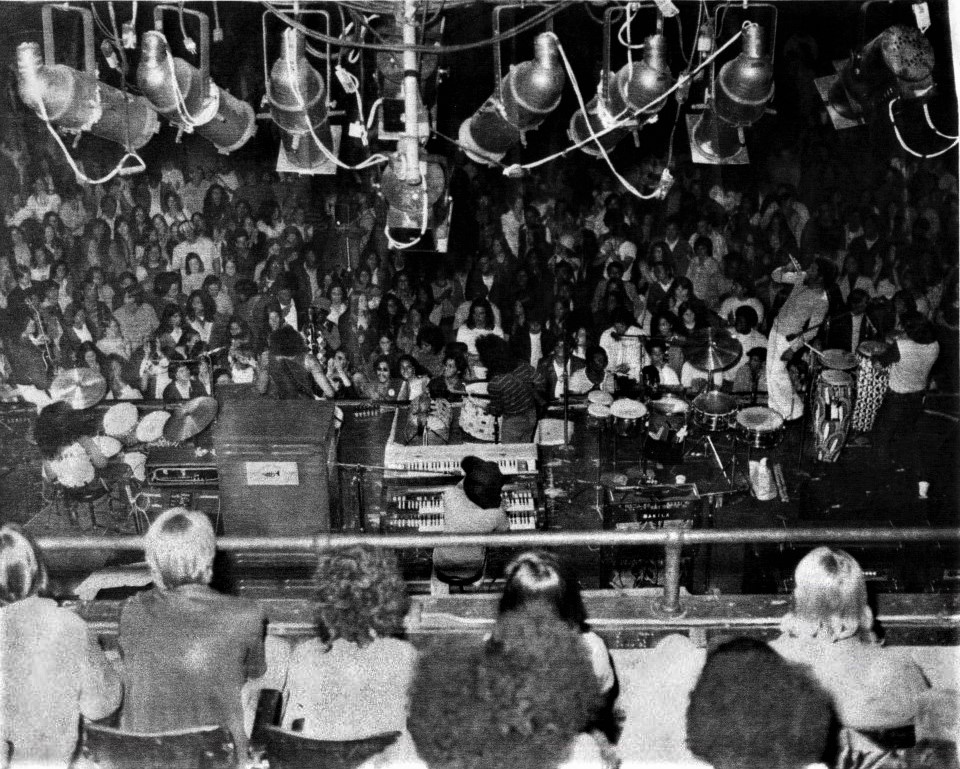
How did you decide to use the name “Dakila”?
Trying to come up with a new band name was quite the challenge. We wanted something that described the musicians and the music. My dad suggested the name “Dakila”. It translates to: of nobility or greatness.
What influenced the band’s sound?
The seven different individual musicians in a mixing pot made up the music. Some are more influential than others. Each musician came from whatever influenced them as a musician. As for me personally there are so many factors that influence what I play or write. Whatever I come up with is from my soul and heart. I remember each musician in Dakila was given some creative input into the music but the recordings came out different.
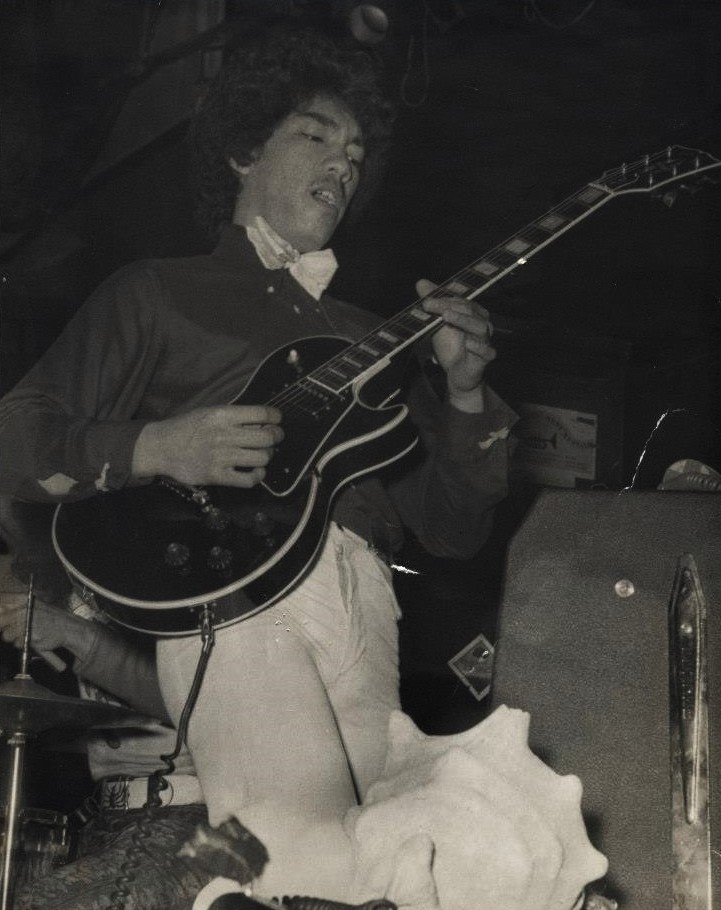
How did you get signed to Epic?
There were several record labels interested in the band. Capitol, Warner Brothers and Epic. They all bid for the band. After the CEO of Columbia Records, Clive Davis saw us at a rehearsal in San Francisco, we went with Epic Records with a 5 year contract.
Did the size of audiences increase following the release of your debut?
The Dakila band following started to grow after the album release and the band started to make appearances on TV and radio to promote the album.
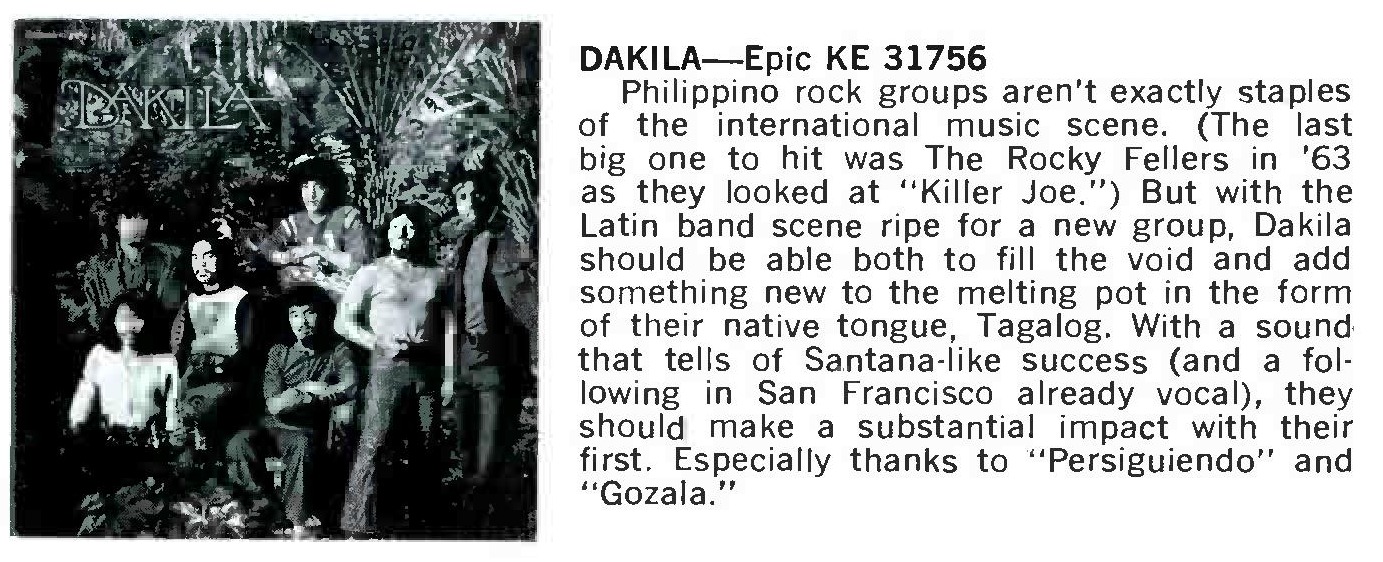
What’s the story behind your debut album? Where did you record it? What kind of equipment did you use and who was the producer? How many hours did you spend in the studio?
The self-titled LP was recorded at Pacific Recording in San Mateo, California. Produced by Bruce Good and Jeffrey Cohen for Waldorf Productions San Francisco. The engineer was Jeremy Zatkin for the Catero Sound Company. The story behind the debut album is written on the back of the cover … “The music on this album presents a flavor that Latin freaks will not immediately recognize. They’ll hear the congas and the timbales, the organ and guitars they know and love. But a subtle spice has been added to the pot, and it’s a whole new stew. The new flavor is Tagalog: It’s the Philippines. Just a taste more jungle than you’re used to, but then, who wants the same old dish all the time? Dakila’s music is tribal in a very real sense. Most of the members are brothers or cousins, and all of them are relatives in the huge, soulful family called Mission District. There are four languages on this album: English, Spanish, Tagalog, and music. Even if you don’t understand the first three, Dakila will speak to you clearly in the fourth.”
The equipment used in the recording session were the following: David Bustamante: Gibson SG Special through a Fender Twin Reverb amp. Bert Ancheta used a Gibson Les Paul Jr using a Fender Twin Reverb. Fred Ancheta used a Fender Jazz Bass using an Acoustic bass amp. Frank Magtoto used a full Ludwig drum kit. Romeo Bustamante used a Hammond B-3 organ. Carlos Badia used a set of Gon Bops congas. Michael GoPaul used a set of LP Timbales and bongos.
The engineer used a 16 track acetate tape for analog recording. It took the band about a week to lay the tracks down and another 2 weeks to cut, splice, mix and master.
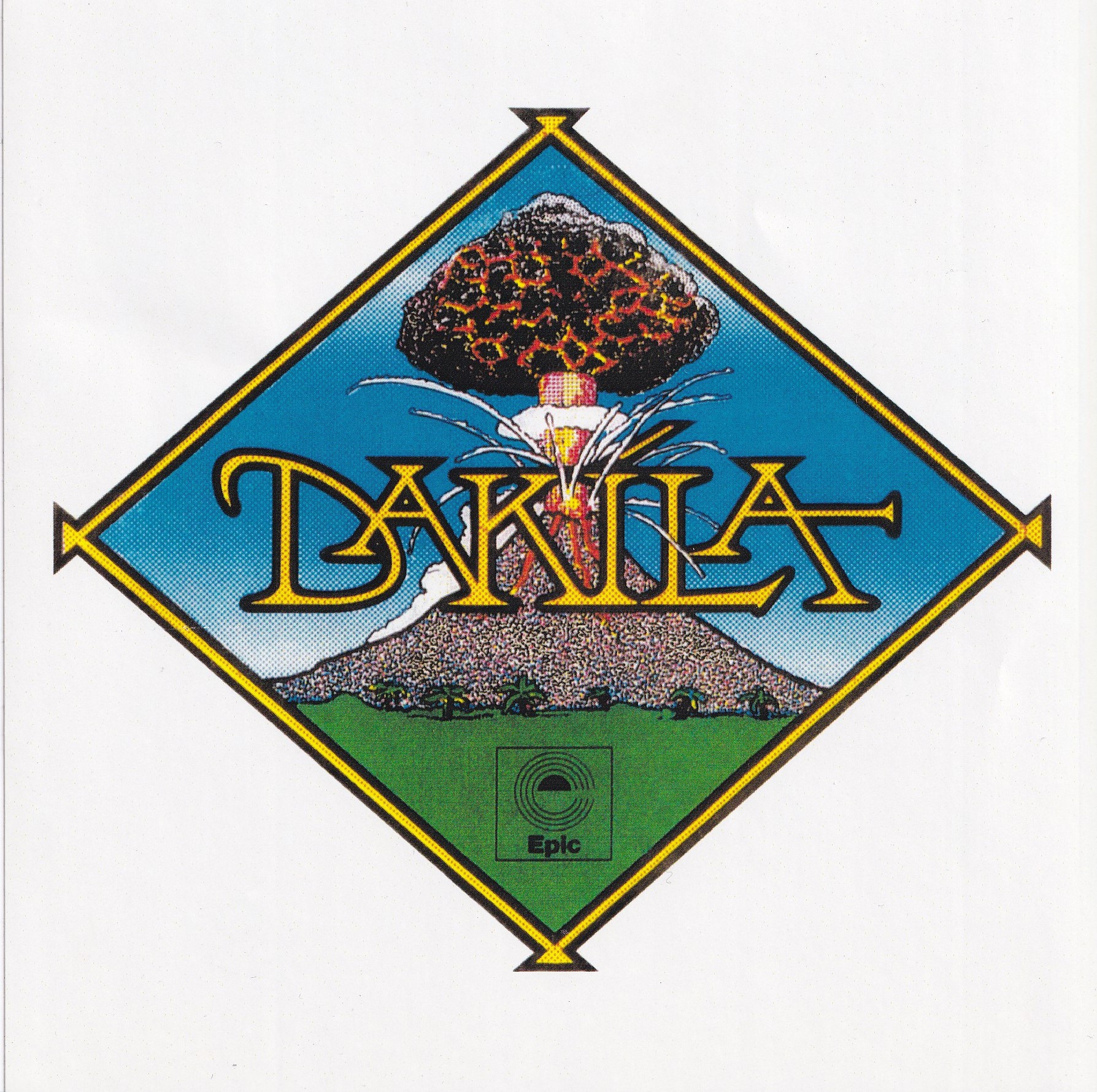
Please share your recollections of the sessions. What were the influences and inspirations for the songs recorded?
The recording sessions were done in San Mateo and most of us lived in San Francisco so it was a 30min drive early each day if there was no traffic. It was drilled in our heads to practice like crazy before we hit the recording studio so there is no time wasted because the studio time was costly. It was expected that we record all the songs in very few takes. It felt like we had hardly any say of the recordings and what was being done to them. At that time I was 17 and it was my first time ever in a pro-recording studio where Santana recorded and other local big artists. I did speak my mind and questioned the engineer and producers of course through our manager.
I felt like the music or the songs were done just like we rehearsed but the outcome was a little different. We were at the mercy of the producers and that didn’t set well with some of us. I felt a lack in leadership and management of the band. I was very naive on how this process worked being only 17 so we had to trust the producers. We used the songs that were the readiest to avoid prolonged studio time. Although there were 6 tracks on the LP they came from splices of other songs and somewhat puzzled together.
Would you share your insight on the albums’ tracks?
SIDE 1.
A1: ‘Makibaka / Ikálat’ | This track was taken from three songs: ‘Makibaka’ the percussion intro with a chant is a separate piece on an instrumental that comes out later in Dakila’s repertoire. ‘Ikálat’ is a song written by the band and lyrics from Romeo Bustamante and Frank Magtoto with a message to the people to stop hiding and speak up because we are all brothers and sisters and to pass around the virtues of love, harmony and peace which is depicted at the end of the track. The whole intro of ‘Ikálat’ was created to sound as if the people should rise up and peace will follow.
A2: ‘Persiguiendo’ | It means “Chasing” in Spanish. Original version written by the band. It was to sound as if we were chasing each other with our instruments in melodic riffs and different time signatures. This song was originally longer and a little slower. Many of the better soaring guitar solos were not used. I remember recording many better versions of the guitar solos.
A3. ‘Make Me A Man’ | This ballad was written by me telling a story of a young man who is trying to find out who he is and what he is made of. The original version is much longer with a beautiful string intro which was cut out in the recording. The violin, viola and cello were used throughout the song. Some mid song parts are missing and the brash ending was not my idea in this song.
SIDE 2.
B1: ‘Gózala’ | It means “Enjoy”. The music was written and arranged by the band and the lyrics from Carlos Badia who spoke Spanish the best although most of the verses are in English. He insisted that he should sing this song since he came up with the lyrics. I disagreed because I thought others with a better voice should do it. This song was entirely too fast. The beginning intro was influenced by a Tito Puente song. We decided to add Tagalog in the countdown intro to excite our people as well.
B2. ‘El Dubi’ | I have no explanation for this title except we changed the title from El Doobie to El Dubi because of the Doobie Brothers and didn’t want the song associated with their band or a marijuana joint. This song was also cut and spliced and a little fast. I believe it was to show the musical skills of the band members. You might need a “joint” to get through it.
B3. ‘Searching For My Soul’ | This song speaks to identity and trying to find out who you are. I love this song but then again it’s a little fast and loses its soulfulness thanks to the producers. This is the title song for a film documentary about the band in the works: www.Dakilamovie.com “Searchin’ for My Soul: The Dakila Story”.
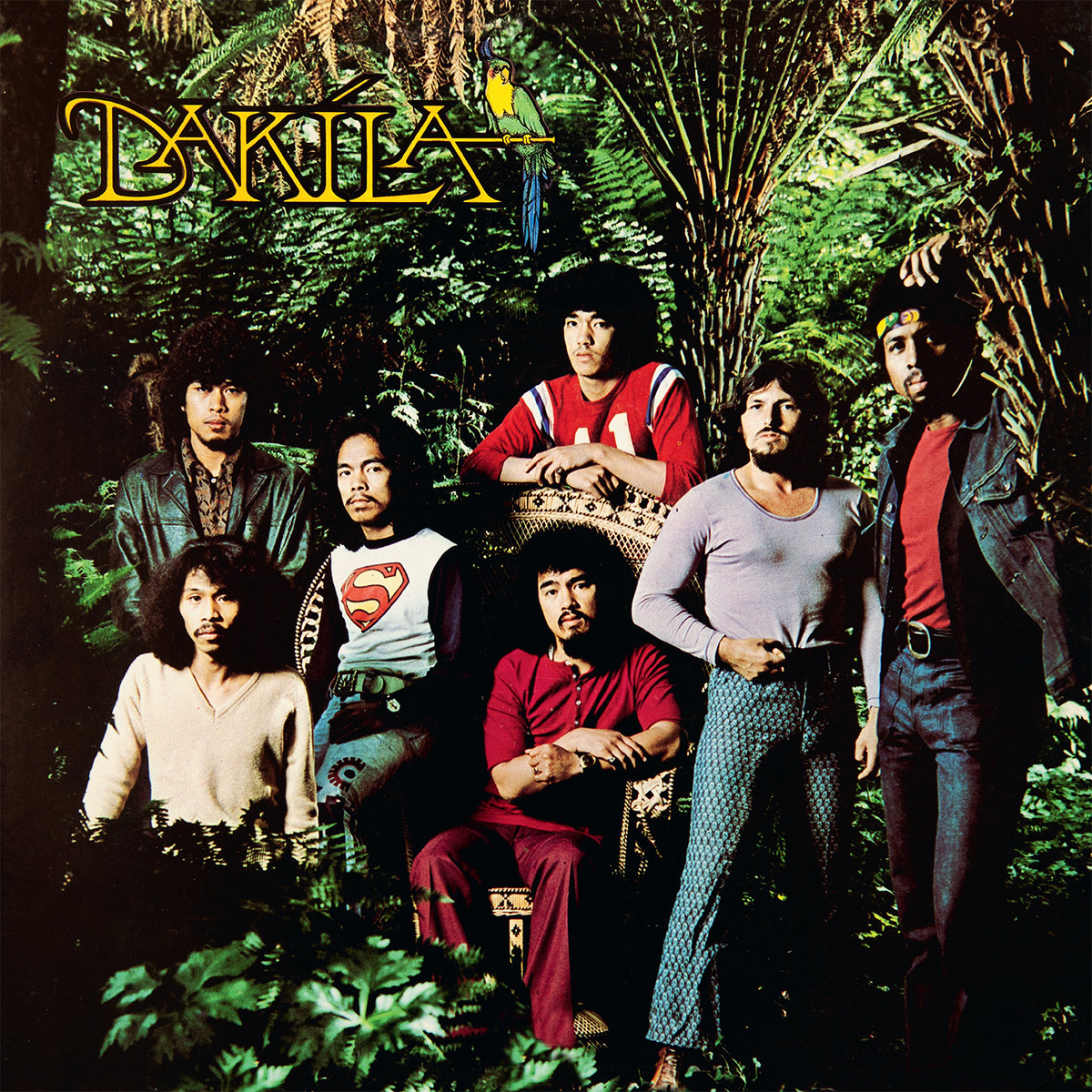
Were you inspired by psychoactive substances like LSD at the time of writing the album?
Most of the band members really didn’t do drugs. There was a beer and a joint here and there but no heavy drugs like LSD. We have performed in many places where that was going on backstage as well as within the audiences.
How pleased was the band with the sound of the album? What, if anything, would you like to have been different from the finished product?
Most of the band members were pleased with the quality of the recording but really didn’t know better or have anything to compare it to. There were a few of us that weren’t quite pleased with the end product. If I could make two top changes in the finished product was that some of the tempo of the songs would need to slow down just a little and a different album cover concept.
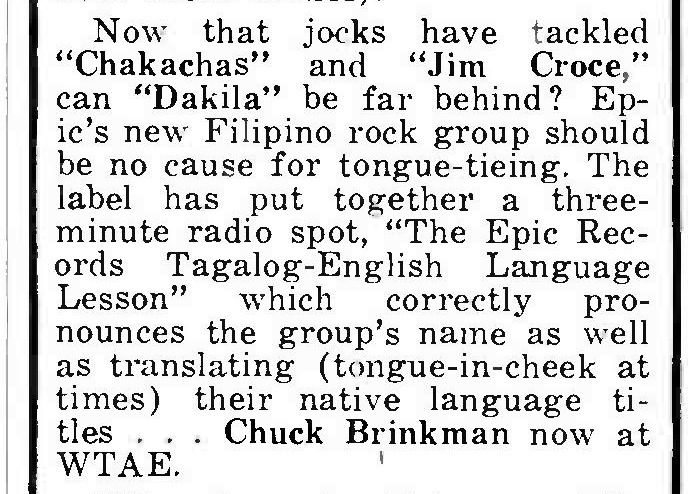
Did the band tour to support the LP?
The band’s tour did help the LP but you have to tour a lot to make a difference and Dakila did not tour much compared to today’s standards.
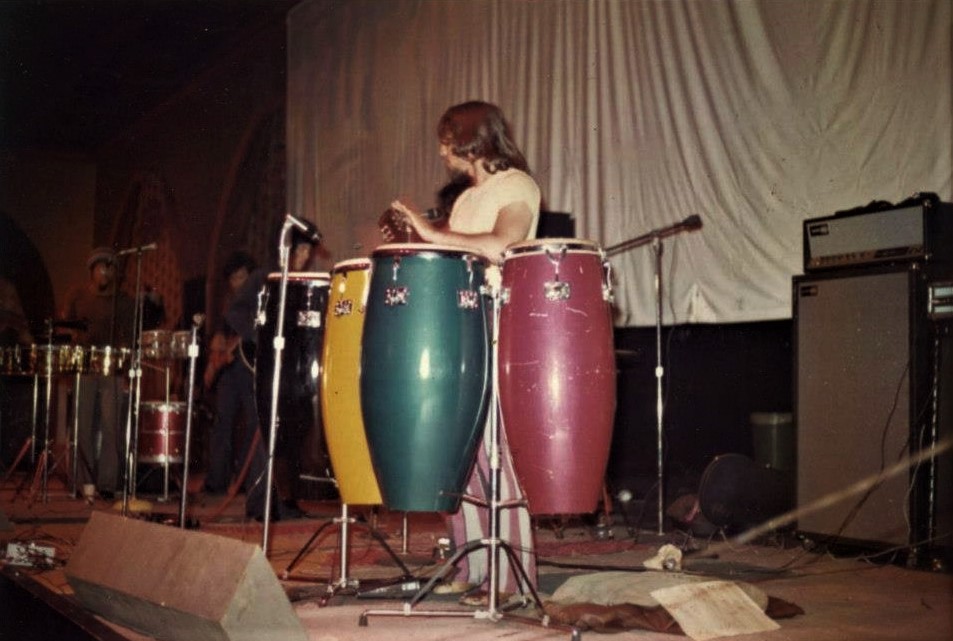
Was there a certain concept behind the album?
The concept behind the album was explained on the back of the LP. It was an introduction of something different coming out of a San Francisco explosion of music.
What happened after the band stopped? Were you still in touch with other members?
The original members disbanded soon after the first LP and tour. Different musicians were on the second LP titled ‘Dakila II’. Then the band totally disbanded in 1974 after Epic released the band from contract. A few of us tried to keep the band going but could not get another record label to sign us. We did a few gigs here and there then started doing covers to keep the band alive and working. After a while I decided to finish my education and lost contact with the original members. I continued to stay musically active through college by writing songs and playing guitar, bass or even keyboards in a cover band till I got married and started to raise a family in 1978. I would play an occasional small gig with my brother Rome just for fun but it was usually covers or standards. Dakila songs were shelved for many years till 2013 when I put the band back together although 3 out of the 7 original band members have passed away.
Freddy Mabuhay formed a fantastic hard rock group Golden Dragon later on… Fred Ancheta was Dakila’s first bass player and was on the first LP. He left the band after the first tour and formed his own band called Mabuhay or Golden Dragon. He also got many of the gigs that Dakila was connected to in the past. I believe he had plans to do his own thing from the beginning and years later we found out he had a lot of good musical material but did not want to share it with Dakila.
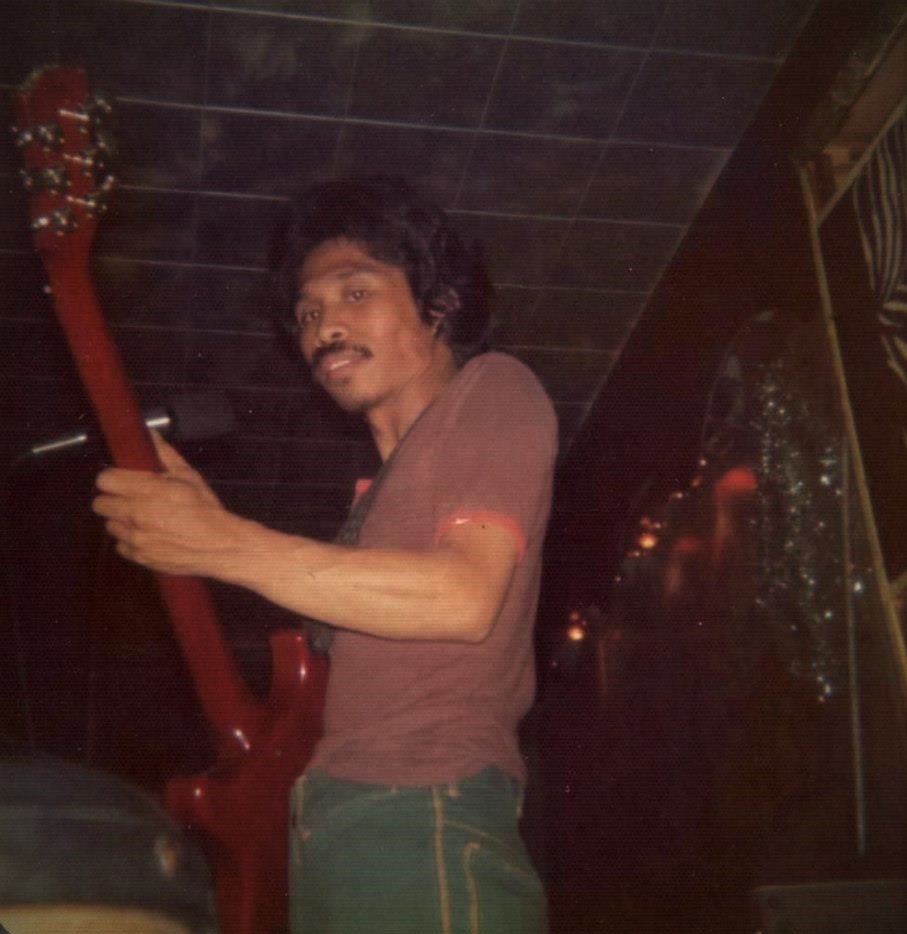
Is there any unreleased material by Dakila?
There was a second LP (unreleased) but in my research nobody knows where the master tapes are. There are songs that I have written for Dakila soon to be released.
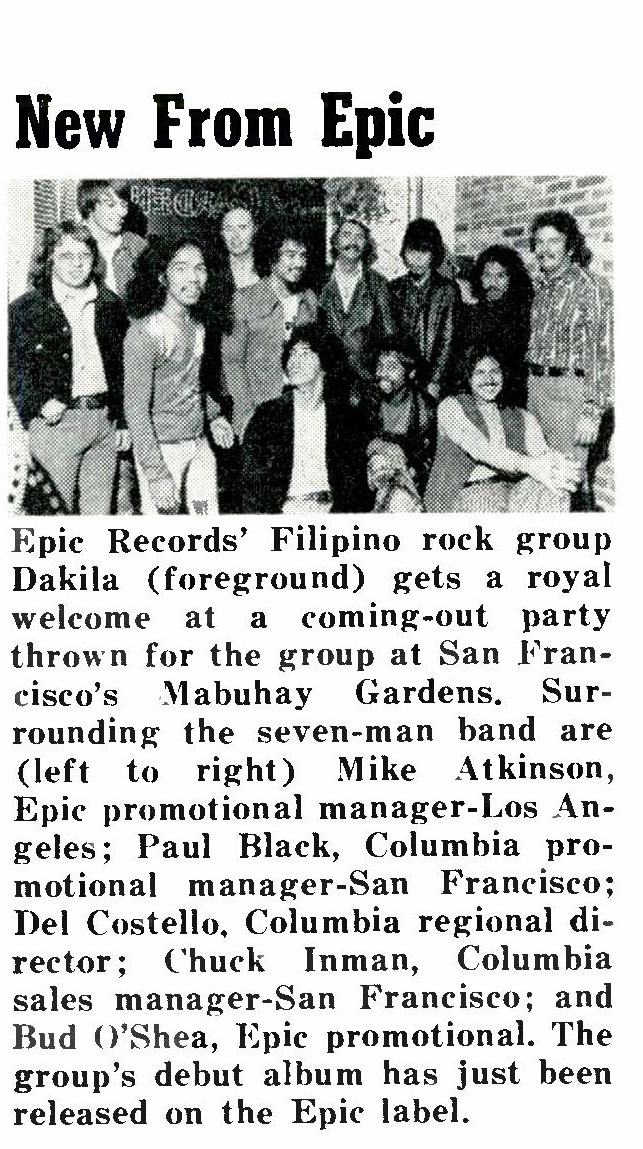
Looking back, what was the highlight of your time in the band? Which songs are you most proud of? Where and when was your most memorable gig?
At ages 17 thru 19, I have shared the stage with many famous people and met famous people backstage during the many concerts we did. We shared studio rehearsal spaces with Santana while they were preparing for recording their LP ‘Caravanserai’ at CBS Recordings in San Francisco. I got to briefly chat with Carlos Santana during their breaks. I met many Hollywood celebrities while doing gigs in Los Angeles. The songs I was most proud of while performing in Dakila were some of the songs I wrote but did not make it to the recordings before the band broke up. My most memorable gig was a 1973 concert in Honolulu, Hawaii with Malo and special guest Buddy Miles. He was a drummer that played with Jimi Hendrix. Those concerts took place at the Honolulu International Convention Center (HIC) just 9 months prior, Elvis stood on that same stage.
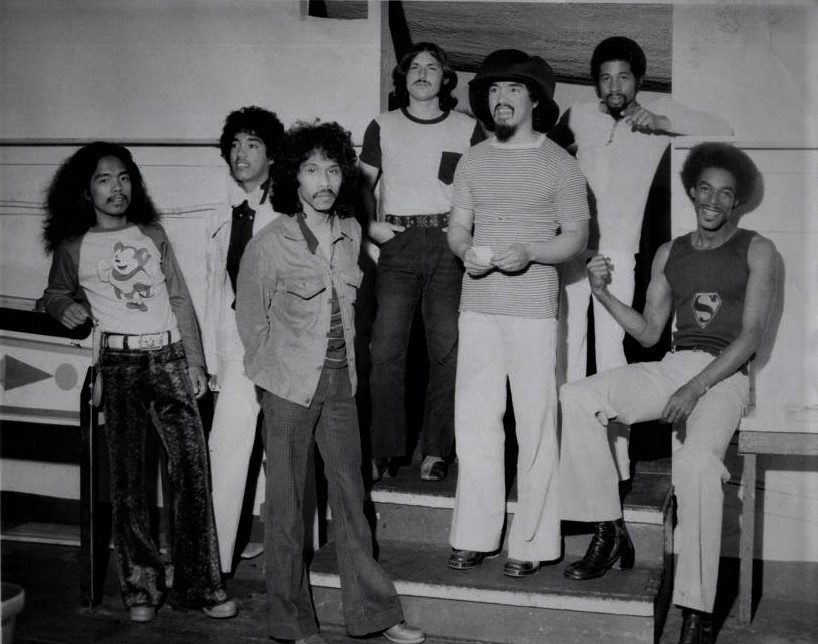
Is any member still involved with the music?
In 2013, I put a Dakila band together to do a tribute performance at a special show at Bimbo’s San Francisco for the Voice’s of Latin Rock Fundraiser for Autism Awareness. This included my brother Rome Bustamante and my cousin Frank Magtoto who were the only other original members left who could still perform at that time plus other good Bay Area musicians I knew that could fill the void. Since 2018, I am the only original Dakila member still actively involved and playing music.
Thank you for taking your time. Last word is yours.
Dakila’s 50 year anniversary since the release of that album is coming up. I know I am one of many stories of many bands that could have made it big but never did but for whatever reason. Why does one artist over another have success or wins a Grammy or is highly recognized for their achievements vs hundreds of talented and gifted more deserving artists that will never be known. I say do what you love and things will happen no matter how long it takes. I hope a reissue of the Dakila album stirs up some interest in Europe.
Klemen Breznikar
Headline photo: Dakila at Golden Gate Park Concert San Francisco | Left to Right: Bert Ancheta, David Bustamante, Michael Gopaul, Fred Ancheta, Frank Magtoto
Dakila Official Website / Facebook / Instagram / Twitter
Guerssen Official Website / Facebook / Instagram / Twitter / Bandcamp / YouTube
Golden Dragon | “Mega rare US heavy psych private press LP from 1981”

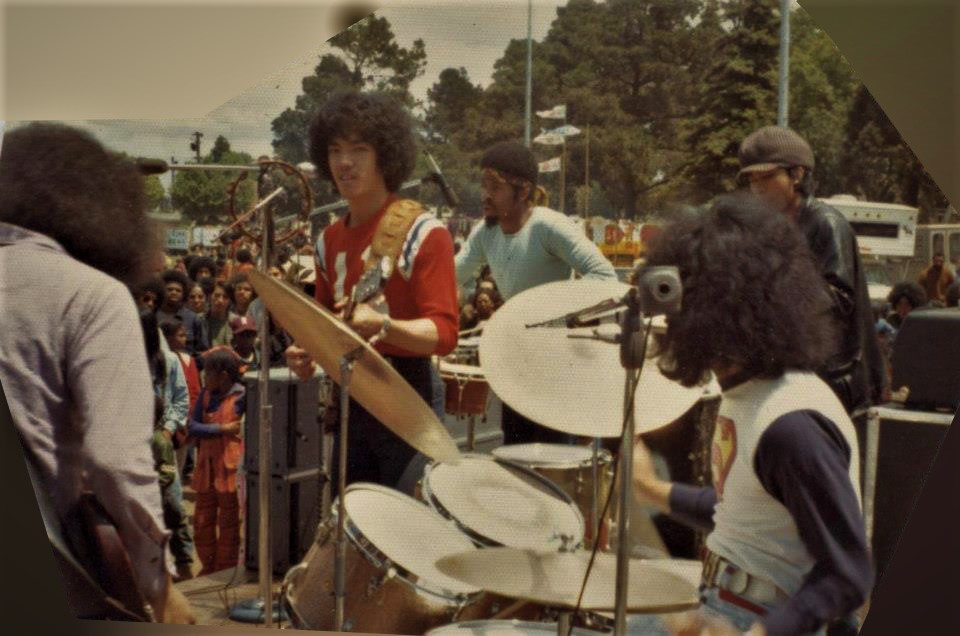

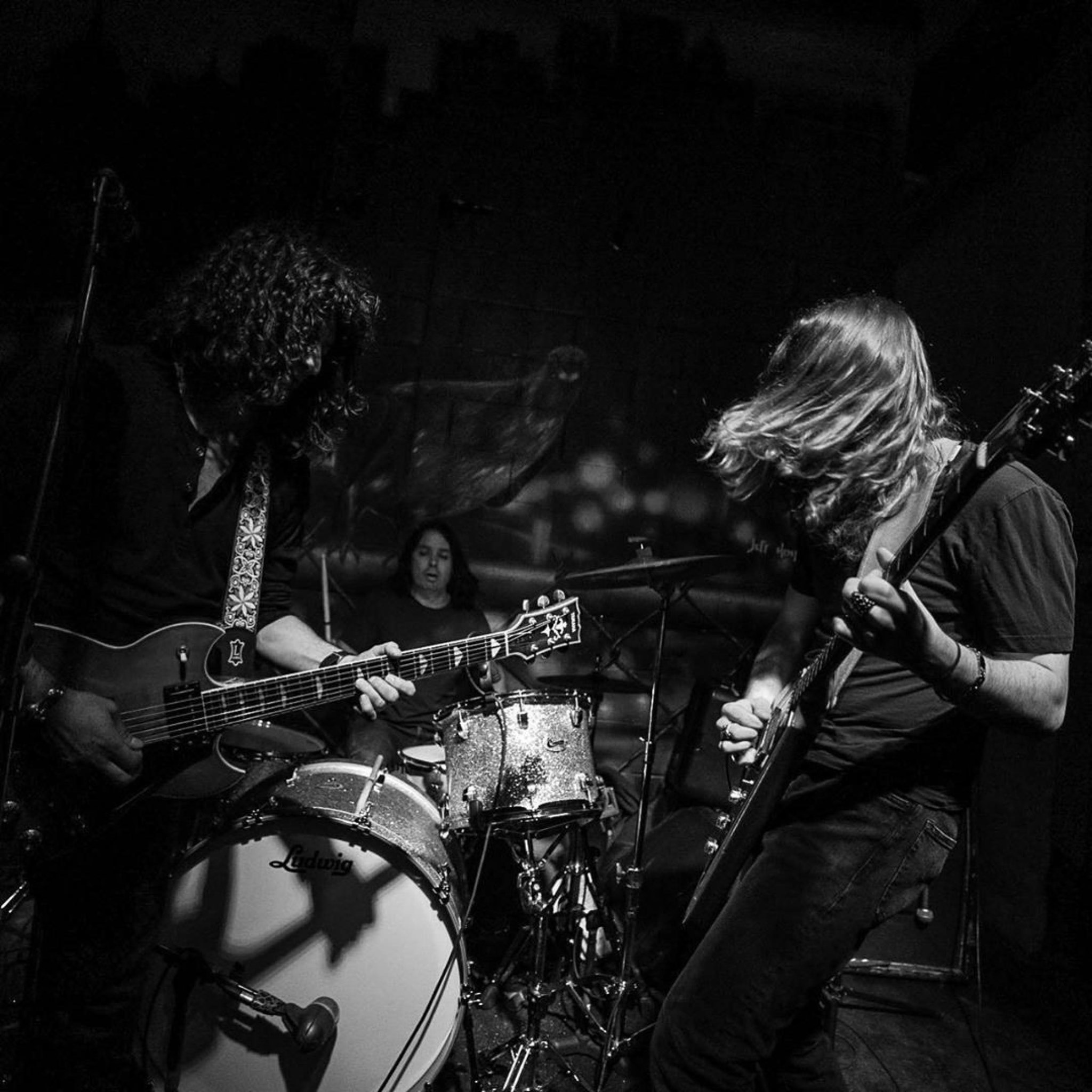
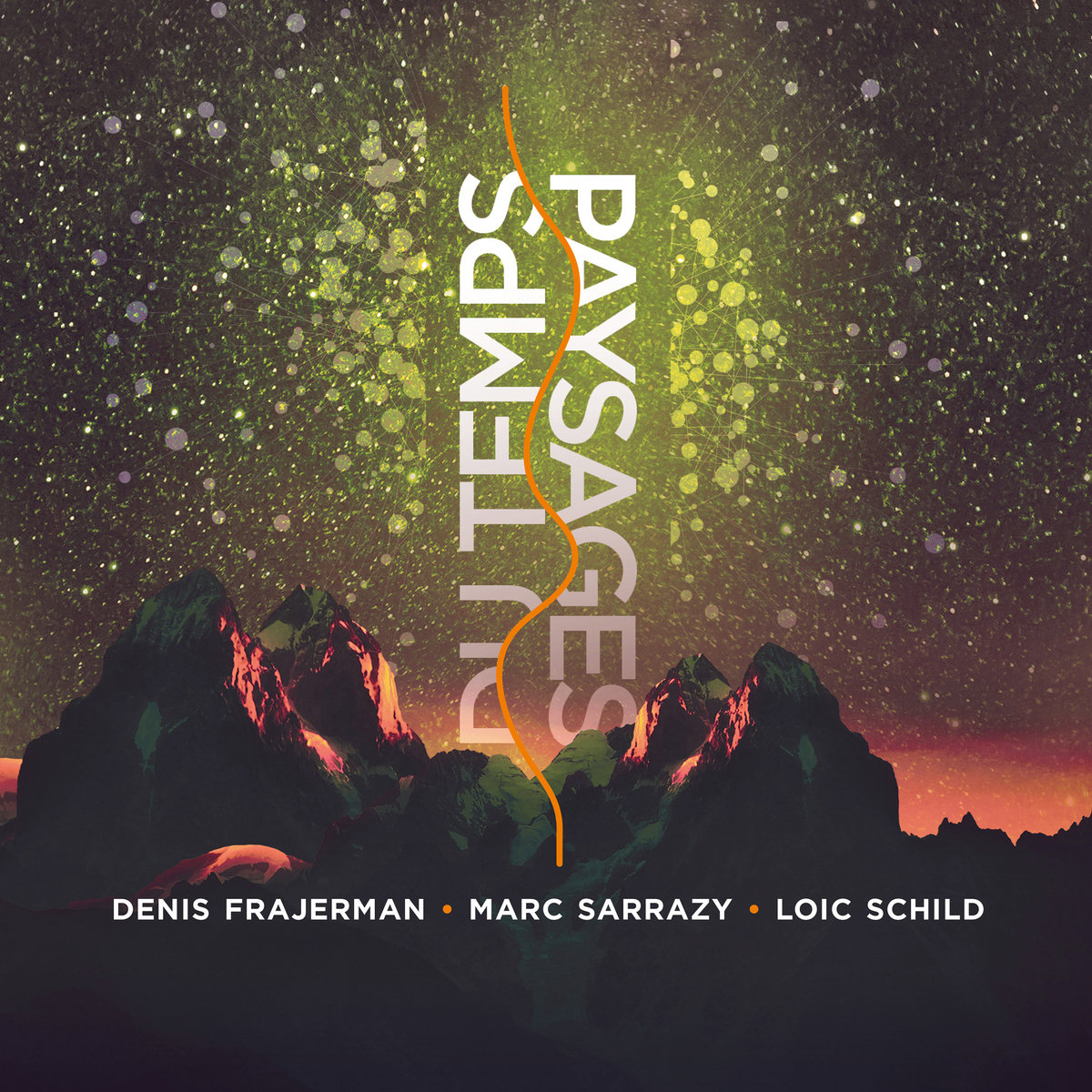
Thank you !
Good band that can certainly jam. Nice to see them featured here.
Wow, great to find out about them. Heard they were going to do a concert in Manila after 40 years. Amazing…